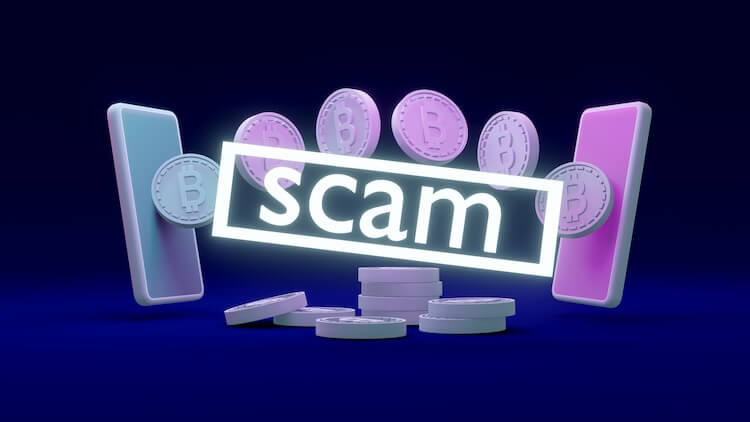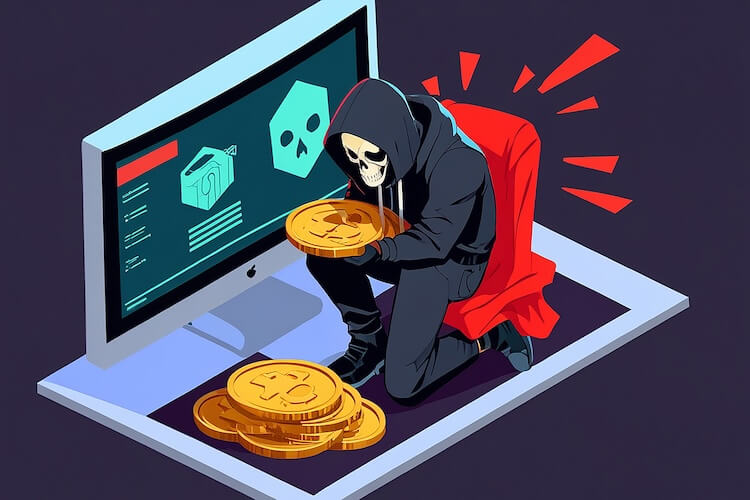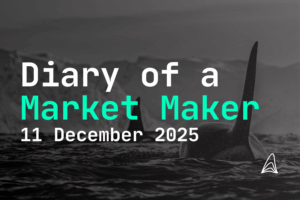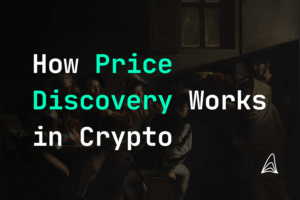Red flags include vague promises, no technical details, fake partnerships, and excessive focus on marketing over actual product development.
- Jakob Brezigar
- Last updated: 3. October 2024
- Reading time: 5 min
How to Recognize a Crypto Scam Project
The crypto world is both exhilarating and risky, and while there are exciting opportunities, there are also pitfalls. Cryptocurrency has opened doors to innovation, wealth creation, and decentralized finance, but its rapid growth has also attracted scammers who prey on uninformed investors. From sophisticated Ponzi schemes to elaborate phishing attacks, fraudsters are becoming more creative in their tactics. Being able to recognize a crypto scam project early on is crucial, not just to protect your investments but also to help prevent the broader reputation of the crypto market from being tarnished.

Table of Contents
How can I spot a scam crypto project?
Look for vague promises, lack of technical details, unrealistic returns, anonymous teams, and aggressive marketing. Always do your own research (DYOR) before investing.
Why should I avoid projects with anonymous teams?
Anonymous teams lack accountability, making it easier for scammers to disappear with investor funds. Legitimate projects are transparent about their team.
Key Takeaways - Recognize a Crypto Scam Project
- Always conduct thorough research (DYOR) before investing in any crypto project to avoid potential scams.
- Be wary of vague or exaggerated claims in a crypto project’s whitepaper, especially promises of guaranteed returns.
- Verify the legitimacy of partnerships and endorsements by checking official announcements or directly contacting the organizations involved.
- Avoid projects with anonymous or inexperienced team members, as this could indicate a scam or lack of credibility.
- Scam projects often use unregulated exchanges to avoid scrutiny—stick to well-known, reputable exchanges for safer investments.
What is a Scam Project in Crypto?
In some of the previous blog posts, we already highlighted some of the significant risks in the crypto market – the issue of fake exchange trading volumes and the 51% attack. Another major risk to be aware of when dealing with cryptocurrencies is the prevalence of crypto scam projects. A crypto scam project is a fraudulent venture masquerading as a legitimate cryptocurrency initiative. These scams can take many forms, including Initial Coin Offerings (ICOs) that never deliver a product, Ponzi and pyramid schemes promising unsustainable returns, phishing attacks aimed at stealing your private keys, and “rug pulls” where the creators abruptly abandon the project and abscond with investors’ money.
At their core, these scams are designed to mislead potential investors by creating the illusion of legitimacy. Scammers use flashy websites, convincing whitepapers, and marketing buzzwords like “decentralization”, “blockchain”, and “token utility” to appear credible. They might even claim partnerships with reputable companies or celebrities to build trust. However, underneath the surface, these projects are built on shaky foundations, with the ultimate goal of siphoning off your funds.
Spotting these scams isn’t always easy, especially for a crypto newcomer. Scammers often prey on emotions, particularly fear and greed. Investors may fear missing out on the next big crypto project or be blinded by the promise of incredible returns. But by staying vigilant and knowing what red flags to look for, you can protect yourself from becoming another victim of cryptocurrency fraud.

Red Flags in a Crypto Project's Whitepaper
A whitepaper is often the first point of contact for investors. It’s where a legitimate project outlines its vision, technical approach, and market opportunity. However, scam projects tend to produce whitepapers filled with buzzwords, vague claims, and flashy promises to obscure the absence of a real product or business model. Here’s how to dissect a crypto project’s whitepaper to spot potential scams:
Vague or Unrealistic Promises
One of the first things to check in a whitepaper is whether the project’s promises are realistic. Scammers are notorious for making grandiose claims that appeal to investors’ emotions. For example, they might promise guaranteed returns of 100x or claim to solve every major problem in the crypto space.
While cryptocurrency investments can indeed yield high returns, no legitimate project can guarantee a specific outcome, especially in such a volatile market. Be wary of phrases like “this project will revolutionize the world” or “guaranteed profit.” If it sounds too good to be true, it probably is. Scammers rely on these emotional triggers to draw in unsuspecting investors.
Lack of Technical Details
In addition to extravagant promises, another red flag is the lack of technical details. A whitepaper should clearly explain how the technology works, what makes it unique, and how the blockchain or token will solve a real-world problem. If the technical section of the whitepaper is light on details or filled with jargon that doesn’t actually explain anything, that’s a sign the project may be a scam. Some projects will even go so far as to copy technical details from other legitimate whitepapers in an attempt to seem credible. Always question vague descriptions of technology or strategies that sound overly complex without offering real substance.
Fake Partnerships and Endorsements
Scammers often claim partnerships with well-known organizations or individuals to bolster their legitimacy. These partnerships are frequently fabricated or exaggerated. For instance, they might claim that a major tech company like Microsoft or IBM is a development partner, or that a famous investor has endorsed the project. To avoid being deceived, always verify these claims independently. If you can’t find any official press releases or announcements from the partner company, chances are the partnership doesn’t exist. Some projects might also list “advisors” who have no idea they’re being associated with the project. Conduct a quick online search or reach out directly to the listed partners to confirm their involvement.
Overly Aggressive Marketing
Legitimate projects typically rely on the strength of their product or vision to gain traction. Scam projects, on the other hand, often resort to aggressive marketing tactics. You might see flashy ads, sponsored content, and endorsements from influencers who know little about the technology. Be cautious if a project seems to be everywhere overnight and is being promoted as the next big thing without much focus on its actual value proposition. Scammers use these tactics to quickly pump up the token’s price and attract uninformed investors before executing a “pump and dump” scheme, leaving others holding worthless tokens.
Suspicious Profiles Involved (with Prior History of Scams)
It’s crucial to investigate the people involved in the project. Many scam projects are run by individuals with shady pasts or even previous involvement in other failed or fraudulent projects. Look for inconsistencies in their professional history. If their LinkedIn profiles seem hastily put together, or if their work experience doesn’t align with their claims, that’s a red flag.
It’s also worth checking if any of the project team members have been involved in other failed crypto ventures, as scammers often move from one fraudulent project to the next. By conducting basic background checks, you can avoid falling victim to repeat offenders in the crypto space.

Team Transparency and Background Checks
The team behind a project is the cornerstone of its credibility. A legitimate project will be proud to showcase its team members, their qualifications, and their experience. However, scam projects often either hide the team behind anonymous profiles or provide little information about them. Transparency is a key indicator of trustworthiness.
Anonymous or Unknown Team Members
While some legitimate projects like Bitcoin have been created by anonymous individuals (e.g., Satoshi Nakamoto), the vast majority of successful cryptocurrency projects are backed by transparent teams. If the project founders or core team members remain anonymous or are using pseudonyms, it’s worth questioning why. Anonymity often signals an intent to avoid accountability, making it easier for scammers to vanish once they’ve defrauded investors. While there may be rare cases where anonymity is justified (such as in privacy-focused projects), most legitimate ventures have nothing to hide when it comes to their leadership.
Lack of Industry Experience
A major red flag is when the team lacks relevant industry experience. A successful blockchain project requires technical expertise, and a team with no background in blockchain, crypto, or related fields should be scrutinized. It’s not just about having a technically proficient team, but also about having experience in developing scalable products, navigating regulatory environments, and understanding tokenomics.
If the team members have little to no experience in these areas, the project may not have the expertise needed to succeed—or worse, it could be a scam. Checking the team’s credentials, past ventures, and professional history is critical in assessing whether they are capable of delivering on the project’s promises.
Analyzing the Project’s Tokenomics
Tokenomics refers to the economic structure of a cryptocurrency project—how its tokens are distributed, used, and circulated. A healthy tokenomics model should demonstrate a clear plan for the token’s utility, fair distribution, and a transparent explanation of its long-term value. Scam projects often have skewed or nonsensical tokenomics designed to enrich a few insiders while leaving everyday investors holding worthless tokens. Here’s how to spot potential red flags in a project’s tokenomics:
Unfair Token Distribution
One of the most critical aspects to examine is how the tokens are distributed. If a significant portion of the tokens is held by the project’s founders, developers, or a small group of investors, it sets the stage for a potential “pump and dump” scenario. In these situations, the few large holders (often referred to as “whales”) can manipulate the price by creating artificial demand, only to sell off their large holdings later, leaving regular investors with devalued tokens.
An ideal token distribution should be fair and transparent, with a reasonable allocation for the team and developers but also ample availability for the public. Some tools, like Arkham Intelligence, allow you to track token distribution and identify potential manipulation before it happens.

Excessive Token Supply without Utility
A project that issues an excessive number of tokens without any clear use case should raise immediate suspicions. Scam projects often flood the market with their tokens in an attempt to create artificial scarcity or inflate their market cap. However, without a tangible product or service that requires the token, these projects are often nothing more than speculative bubbles. Token utility is essential—whether it’s being used to facilitate transactions, power decentralized applications, or act as governance tokens in decentralized autonomous organizations (DAOs). Without utility, a token is essentially just a vehicle for speculation, and once the hype dies down, the token’s value will plummet.
When assessing a project, examine how the token fits into its ecosystem. Is there a legitimate demand for the token based on the project’s product or service? Or is the token merely a way to raise money for the founders? You can also use tools like Token Unlocks to monitor the release of new tokens into circulation, ensuring that you aren’t caught off guard by sudden supply increases that could devalue your investment.
Unrealistic Returns and Guarantees
In the crypto space, high returns are possible, but they’re never guaranteed. Any project that promises “guaranteed returns” or “risk-free profits” is almost certainly a scam. Crypto markets are highly volatile, and even the most promising projects are subject to market forces beyond their control. Fraudsters often lure investors in by promising sky-high returns in a short period. Ponzi schemes, for instance, rely on new investor money to pay off earlier investors, creating the illusion of profitability until the scheme inevitably collapses.
Legitimate cryptocurrency projects never offer guaranteed returns, as they know it’s impossible to predict market movements with certainty. Be extremely cautious of any project making such claims. Scammers know that the promise of easy money is irresistible to many, and they capitalize on this by setting unrealistic expectations. Always remember that if a project’s returns seem too good to be true, they probably are.
Unregulated or Unknown Exchange Listings
The exchanges where a cryptocurrency is listed can tell you a lot about the legitimacy of the project. Scam projects often avoid major, regulated exchanges because these platforms have strict vetting processes that would likely expose fraudulent activity. Instead, scam tokens tend to be listed on small, unregulated exchanges with little to no oversight. While smaller exchanges aren’t inherently bad, they can be breeding grounds for scams due to the lack of due diligence.
If a project is only listed on obscure or unregulated exchanges, this should raise a red flag. Before investing, check whether the token is available on reputable exchanges such as Binance, Kraken, or Coinbase. If it isn’t, find out why. Sometimes projects are still in their early stages and haven’t yet secured a major listing, but other times, they are deliberately avoiding scrutiny from reputable platforms. The lack of listing on major exchanges could also indicate that the project has been rejected due to regulatory concerns or insufficient legitimacy.
Conducting Your Own Research (DYOR) Before Investing
The most important rule before investing in any cryptocurrency project is to do your own research (DYOR). Even if a project seems legitimate at first glance, digging deeper can reveal inconsistencies. Check community forums, look for independent reviews, and verify all claims. Tools such as Orcabay’s live dashboard can help keep you informed and ensure transparency, providing you with detailed reports on trading activities.
By conducting your own research, you can better protect yourself from crypto scams. Orcabay, a trusted player in the market-making space, offers regulated and compliant services under EU law. With daily project monitoring, personalized suggestions, and protection mechanisms, Orcabay helps projects navigate the volatile waters of crypto.
Concluding thoughts on How to Recognize a Crypto Scam Project
Scam crypto projects are becoming more sophisticated, making it harder for investors to spot them. Whether it’s Ponzi schemes, phishing attacks, or ICO scams, understanding the common red flags will help you avoid falling victim to these frauds. Always do your own research, scrutinize whitepapers, analyze tokenomics, and be wary of exaggerated promises.
Scammers will continue evolving, but so will the tools and strategies available to safeguard your investments. By partnering with credible firms like Orcabay, which provides transparency, compliance, and advanced trading protection, you can better protect your crypto investments and stay ahead of potential scams.
Disclaimer: The information provided in this article is for informational purposes only and does not constitute financial, investment, or other professional advice. All opinions expressed herein are solely those of the author and do not represent the views or opinions of any entity with which the author may be associated. Investing in financial markets involves risk, including the potential loss of principal. Readers should perform their own research and consult with a licensed financial advisor before making any investment decisions. Past performance is not indicative of future results.

Jakob Brezigar
Jakob, an experienced specialist in the field of cryptocurrency market making, boasts an extensive international presence. With Orcabay, he has skillfully managed major operations and deals for a wide array of global stakeholders.




